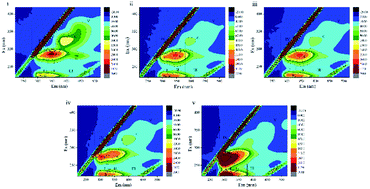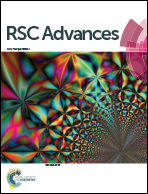Changes in degrading ability, populations and metabolism of microbes in activated sludge in the treatment of phenol wastewater†
Abstract
Herein, changes in the degrading ability, populations and metabolism of microbes in activated sludge exposed to 60–350 mg L−1 phenol are thoroughly investigated. A phenol degradation experiment is conducted using activated sludge as inoculum over 140 days. The results suggest that the sludge efficiently degrades 250 mg L−1 phenol; however, it is unable to remove 350 mg L−1 phenol completely in two days, which might be caused by the decreased activities of catechol 1,2 dioxygenase (C12O) and catechol 2,3 dioxygenase (C23O). The specific oxygen uptake rate (SOUR) of the sludge and extracellular polymeric substances (EPS) generation are inhibited at the beginning of phenol degradation and then increase with phenol loading. A large amount of humic acid (HA) is produced during the degradation of 350 mg L−1 phenol due to cell decomposition. Illumina-MiSeq sequencing indicates that denitrifiers are competitive clusters at high phenol concentrations. The present study provides a comprehensive understanding of mechanisms of microbial responses to toxic compounds.



 Please wait while we load your content...
Please wait while we load your content...